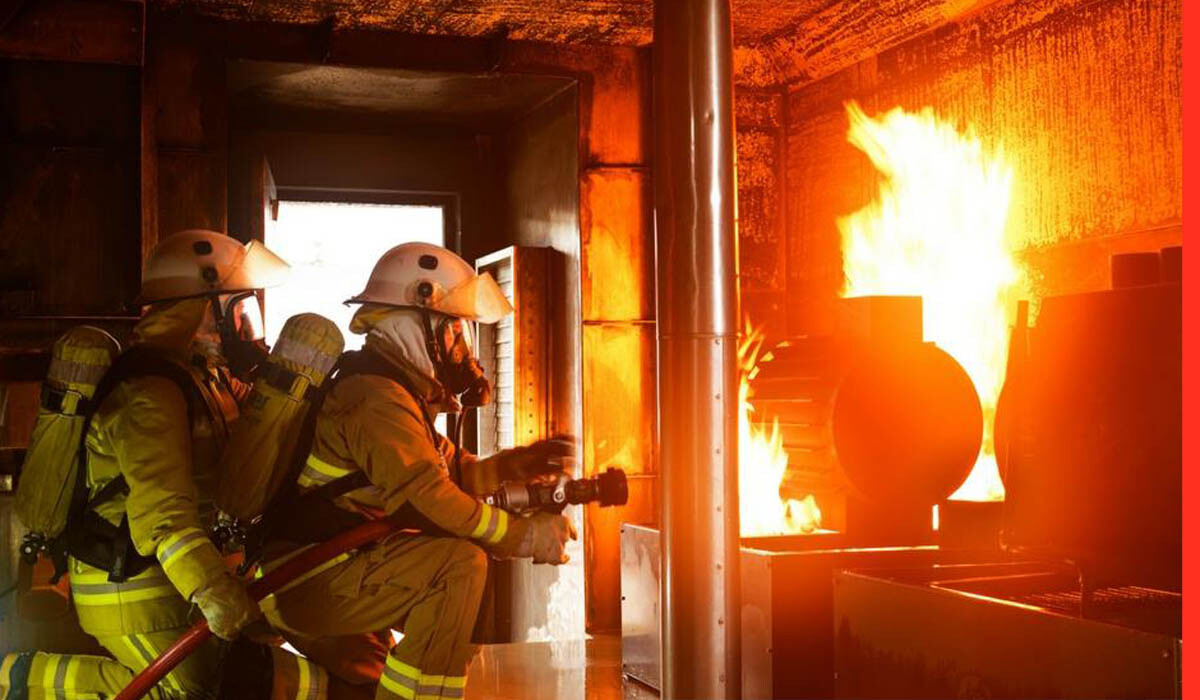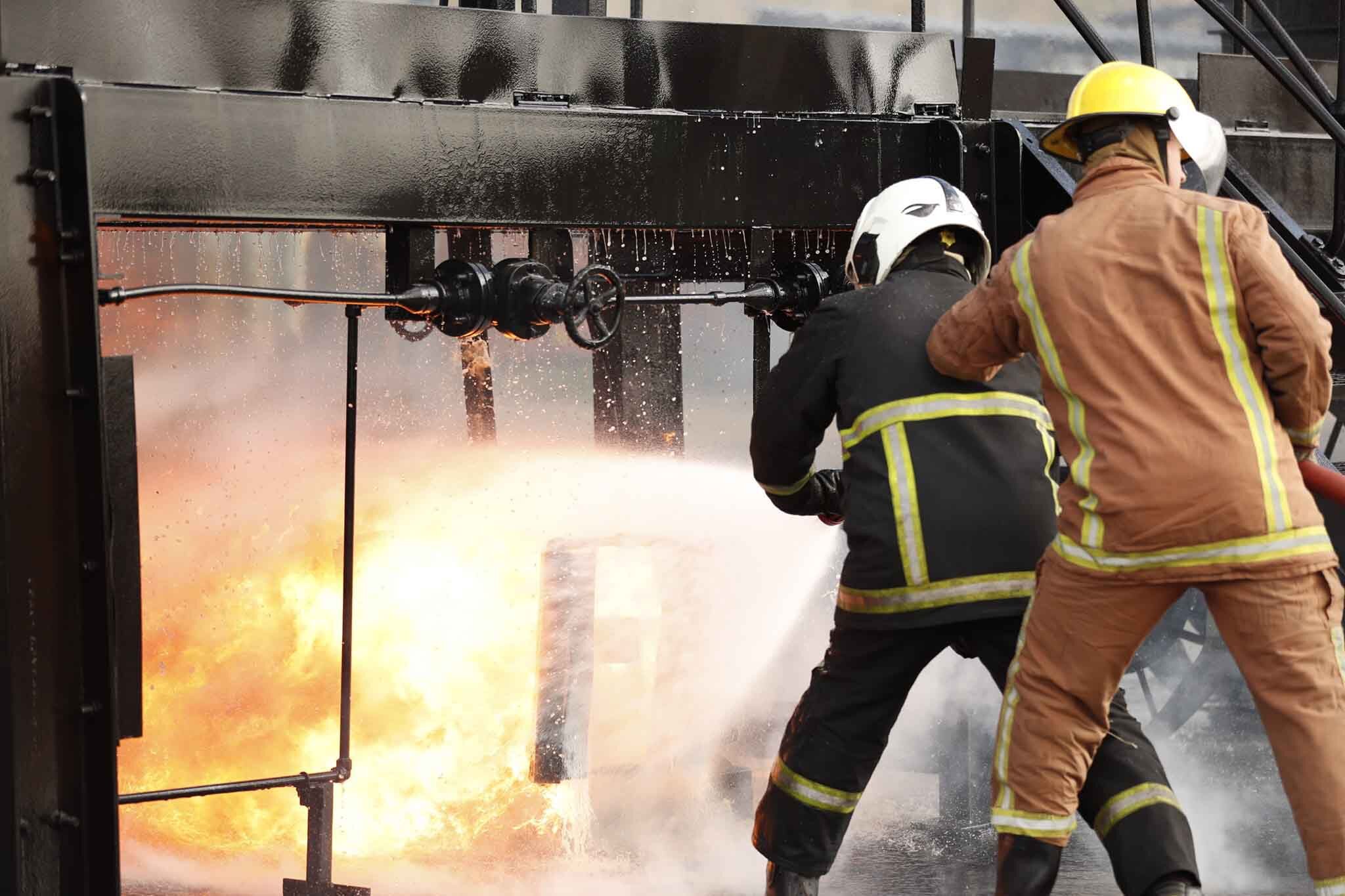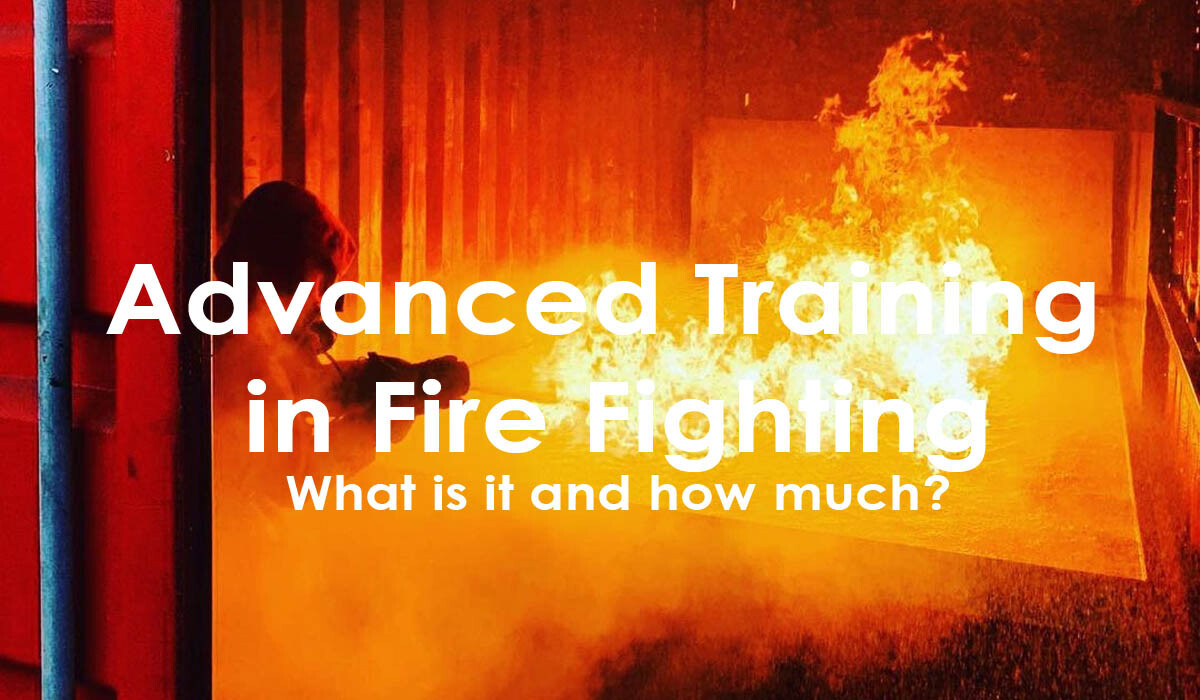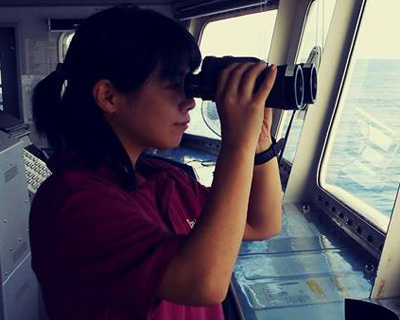Advanced fire fighting is one of the required training for seafarers wishing to work on board.
According to the STCW Convention, the course is mandatory for every master, mate, chief engineer, second engineer, and officer of a watch (OIC). It is also recommended to support level seafarers.
However, many shipping companies require them to take such training even for ratings.
The ship itself is a fire hazard. Almost all materials on board can be fuel for fire. Some of the ship’s cargoes are even fire hazards themselves. Moreover, its fuel and fuel systems are just a spark away from blazing.
Thus, the STCW Convention laid out standards of competence for seafarers taking advanced firefighting courses.
Personal experience
In my whole seafaring career, I experienced two events involving fire. And it happened in the most unexpected way.
When I was still a deck cadet, we were discharging gasoline in Amsterdam. Suddenly, the crew on the other ship docked on another jetty and started waving at us. We waved back thinking it was just a kind gesture.
They didn’t stop and started making other gestures. Luckily, we started to notice there was something wrong.
We hurriedly went aft, the way they were pointing to, and discovered that our swimming pool on board had caught fire!
I and the bosun were the first to arrive.
Crazy, right?
Except that the pool was filled with garbage due to our ship being at anchor for 3 months.
In another case, our small garbage bin for cigarette butts started blazing. We found out that someone didn’t put out his stick prior to disposing of them.

If there is advanced firefighting, should there be a basic firefighting course?
That is correct.
You can’t instantly enroll in advanced training in fire fighting. There is, however, a pre-requisite course like basic firefighting.
But that is already incorporated in your Basic Training (BT). As a recap, BT has four elements of safety listed below.
- Personal Survival Techniques
- Fire Prevention and Fire-Fighting
- Elementary First Aid, and
- Personal Safety and Social Responsibilities
What you will learn in AFF
The full course is around 36 hours long spread over 4 or 5 days. On the other hand, a refresher for advanced firefighting is only 12 hours. The validity of its Certificate of Proficiency (COP) is 5 years.
Advanced fire fighting course has two areas of instruction namely theoretical and practical.
The theoretical side gives trainees knowledge and understanding of fire and firefighting techniques.
The practical part immerses the seafarers in realistic scenarios of fighting fire using appropriate methods.
During the training, you will be required to demonstrate competence to undertake specific tasks. They involve duties and responsibilities related to fire control and fire fighting.
The whole training is physically demanding. Thus, each trainee must have a valid medical certificate before taking the practical exams.
Theory
- What is fire
- Theory of fire triangle
- Why materials burn
- Causes of ignition
- What causes fire
- Types of fire
- How fire spreads
- Extinguishing mediums
Practical
- What to do upon discovering a fire
- How to use portable fire extinguishers
- Using hydrants, hoses, and nozzles
- Extinguishing different types of fire
- Extinguishing fire in different locations
- Inspecting, testing, and using breathing apparatus
Areas of Competence
There are three competencies a seafarer must perform throughout the training.
He must show knowledge, understanding, and proficiency in these areas. They are, by the very fact, required by Table A-VI/3 of the STCW Convention.
Control firefighting operations aboard ships
a) Fire-fighting procedures at sea and in port, with particular emphasis on organization, tactics, and command
b) Use of water for fire extinguishing medium, the effect on ship stability, precautions, and corrective procedures
c) Communication and coordination during fire-fighting operations
d) Ventilation control, including smoke extraction
e) Control of fuel and electrical systems
f) Fire-fighting process hazards (dry distillation, chemical reactions, boiler uptake fires, etc.)
g) Fire-fighting involving dangerous goods
h) Fire precautions and hazards associated with the storage and handling of materials (paints, etc.)
i) Management and control of injured person
j) Procedures for coordination with shore-based firefighters

Organize and train fire parties
a) Preparation of contingency plans
b) Composition and allocation of personnel to fire parties
c) Strategies and tactics for control of fires in various parts of the ship
Inspect and service fire detection and fire extinguishing systems and equipment
a) Fire-detection systems; fixed fire extinguishing systems; portable and mobile fire extinguishing equipment, including appliances, pumps, and rescue, salvage, life support, personal protective and communication equipment
b) Requirements for statutory and classification surveys
Investigate and compile reports on incidents involving fire
a) Assessment of the cause of incidents involving fire
How much does advanced firefighting cost?
There are many training centers in the Philippines and abroad offering such courses.
The price tag for an advanced fire fighting (full) course ranges between Php2,500 to Php4,000 ($50 to $80).
A refresher course is priced lower at around Php1,200 or around $21.
After the training, you can file your Certificates of Proficiencies (COP) using MISMO. The good news is that COP payment is reduced to 50% without the need to go to MARINA.
Meanwhile, AFF in other countries costs between USD300.00 to GBP645.00 like in the UK.
May the winds be in your favor.



0 Comments